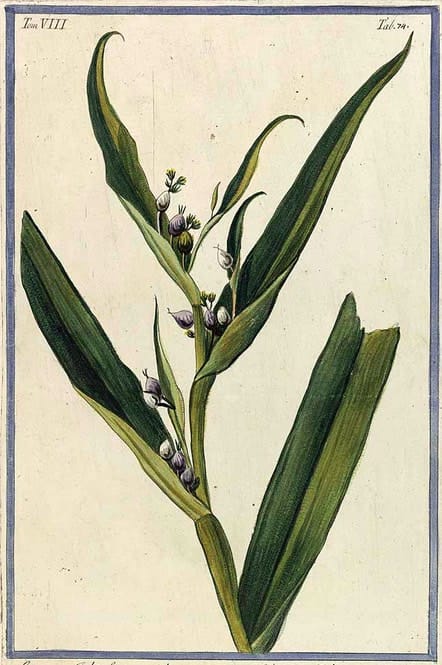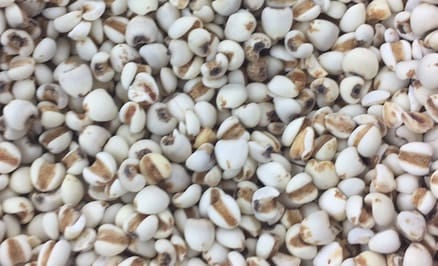Coix, Job’s Tear, Yi Yi Ren 薏苡仁
Yi Yi Ren (TCM) Coix lachryma
Coix lachrymaBonelli, Giorgio, Hortus Romanus juxta Systema Tournefortianum, 1783-1816
 Coix Yi Yi Ren
Coix Yi Yi Ren Members CLICK HERE for the PRO VERSION
Members CLICK HERE for the PRO VERSIONBotanical name:
Coix lachryma
Coix lachryma-jobi and Coix lacryma-jobi var. ma-yuen are official in TCM.
Parts used:
Seed
Temperature & Taste:
Cool, dry. Sweet, Bland
Classification:
C. Clear Damp, Promote Urine
Uses:
1. Clears Damp, Promotes Urine
-Edema, fluid retention, swelling of the legs
-Diarrhea from Damp
2. Clears Heat and Damp, Promotes Urine:
-painful or dribbling Urine from Damp-Heat obstruction
-it is suitable for any condition with Damp-Heat marked by poor digestion and a greasy tongue coat
3. Clears Wind-Damp, Opens Obstructions:
-painful swelling of the Joints; it can be used for Heat or Cold cases depending on the herbs its used with
-in TCM it is regarded as most effective for reducing tightness and spasms, and increasing joint mobility
4. Clears Heat and Toxin:
-acne, pustules, boils
-Abscesses of the Lungs or Intestines
Dose:
9–30 grams in decoction
Comment:
… available in PRO version
Preparation:
… available in PRO version

Main Combinations:
1. Edema and scanty Urine from Damp obstruction, Coix Yi Yi Ren with … available in PRO version
2. General for Damp, Coix Yi Yi Ren with … available in PRO version
3. General for Damp-Heat, Coix Yi Yi Ren with … available in PRO version
4. Heavy, painful and swollen legs, Coix Yi Yi Ren with … available in PRO version
5. Joint pain from Heat and Toxin (red, hot, swollen, painful joints), decoct Coix Yi Yi Ren with … available in PRO version
6. Add Coix Yi Yi Ren to … available in PRO version
7. Acute Wind-Damp painful obstruction, Coix Yi Yi Ren with … available in PRO version
8. Intestinal Abscess, Coix Yi Yi Ren with … available in PRO version
9. Lung Abscess, Coix Yi Yi Ren with … available in PRO version
Cautions:
Generally very safe.
Main Preparations used:
Dry-fried Job’s Tears
-
Extra Info
-
History
|
‘The different species of Coix bear the Sanskrit names of Gavidhuka, Gavedhu, and Gavedhuka. They are mentioned in Vedic literature, and appear to have been one of the cereals which were cultivated by the Arians on the hill-slopes of the Himalayas. They are still cultivated by the hill-tribes in the Kbasia and Naga Hills and in Assam and Burma, where they arc known by tho vernacular names of Kasi, Kulese, Kalinsi, Kyoit, &c, and are used as a food-stuff. The wild form, common in the plains, is only used for medicinal purposes, and is considered to be strengthening and diuretic. The Arab travellers in the |
East became acquainted with the seeds and named them Darau Daud “David’s tears,” and afterwards Darau Aydb “Job’s tears.” Es-Saghani, who died about the year 1260, mentions them in the Obab as a well-known strengthening and diuretic medicine. The Arabs introduced the plant into the West, and it has become naturalized in Spain and Portugal, where it is still known as Lagrima de Job. European botanists have rather inappropriately given the name of Coix to this genus, Coix being the name of a kind of palm growing in Africa and mentioned by Theophrastus and Pliny. (Pharmacographia Indica, Dymock, 1893) |
